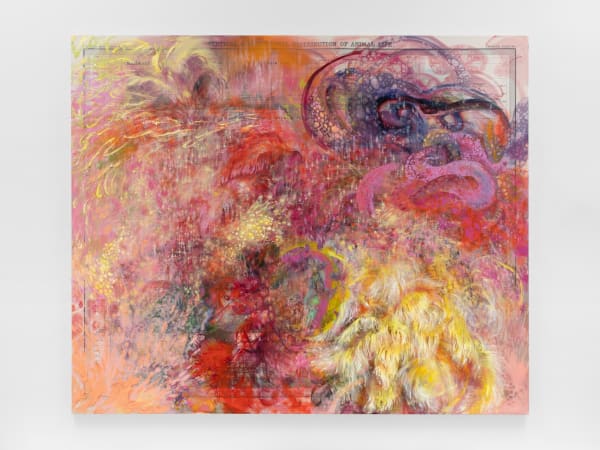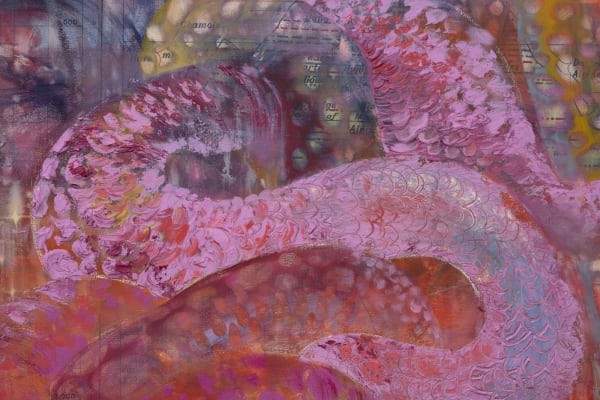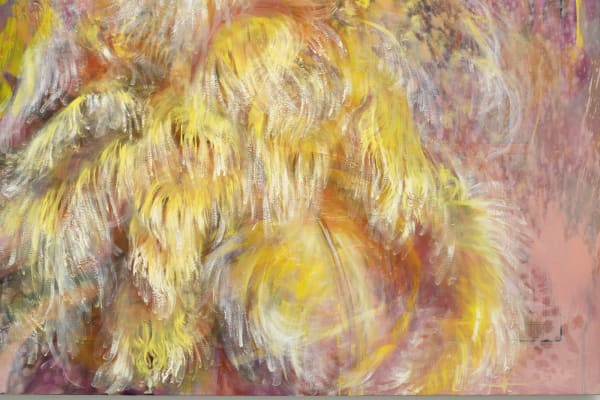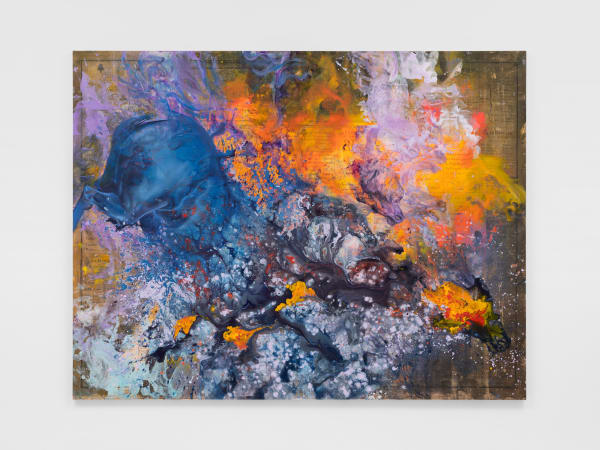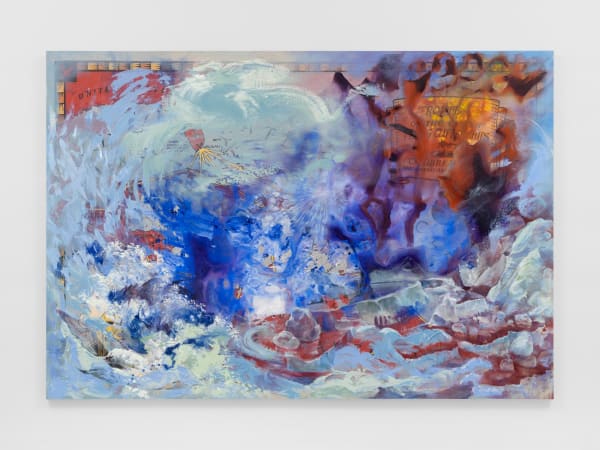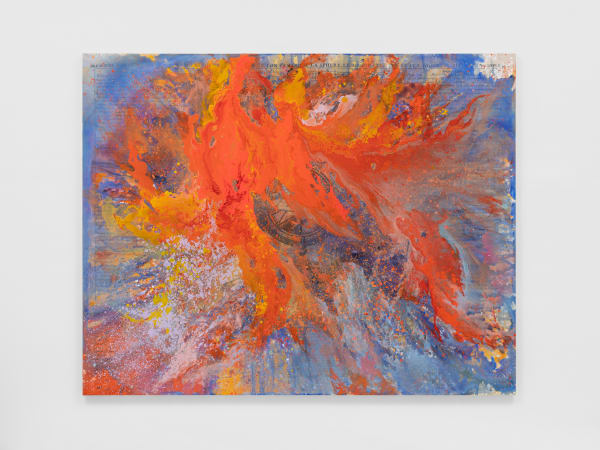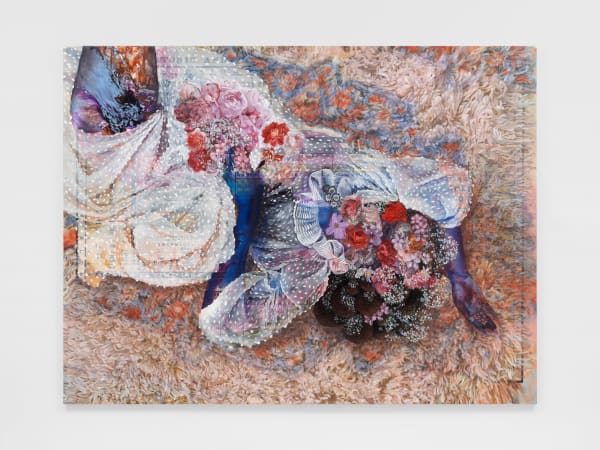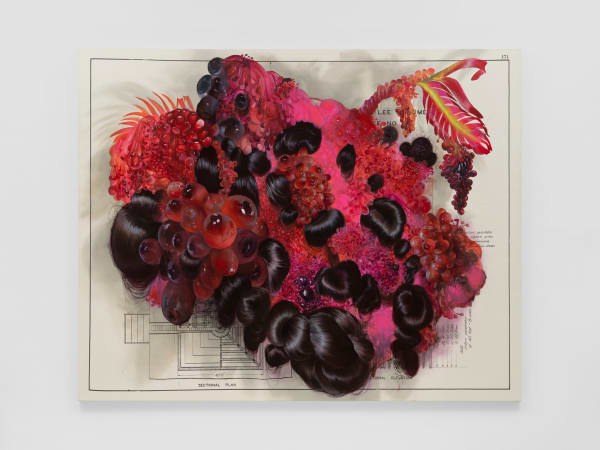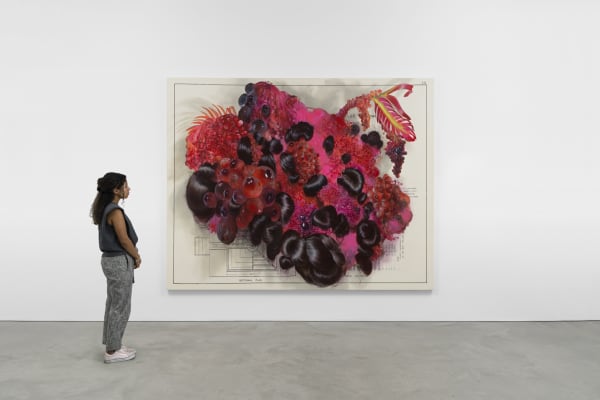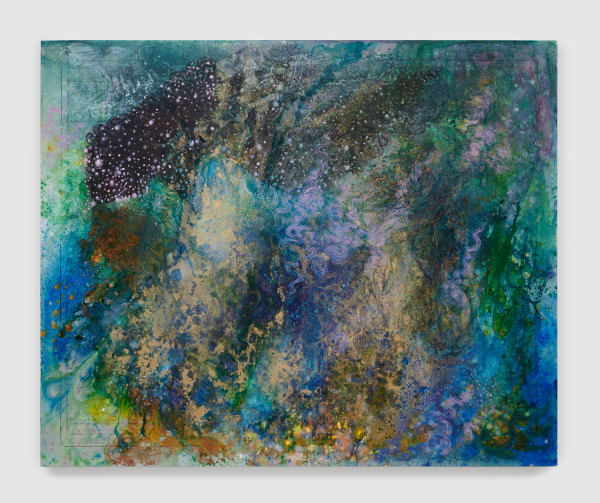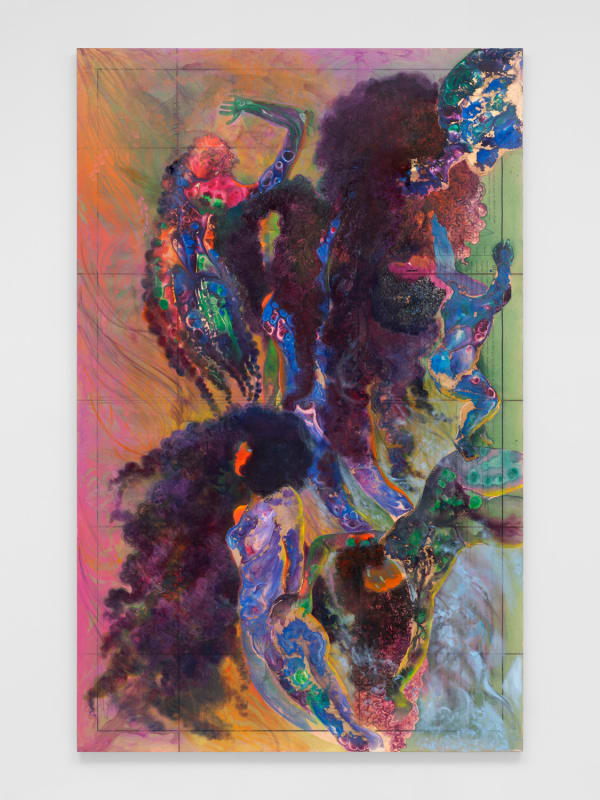-
-
For over a decade, Firelei Báez has painted transcendent chromatic interplays of abstract gesture and symbolic imagery directly onto found maps and printed materials to disrupt the boundaries they serve to delineate. For her third solo exhibition with the gallery, the artist presents a group of immersive large-scale canvases that continue and deepen her ongoing exploration of narratives of Euro-American exceptionalism. These vivid new paintings see Báez ruminate on the foundational mythologies that have come to form a uniquely American brand of nostalgia–one shaped by the projected desire for an idealized past that never was.
-
The exhibition’s title is a reference to Katy Siegel’s 2010 exhibition, Americanana, whose altered spelling of Americana was intended to “evoke the absurdity of European settlers using Indian words to name soccer clubs and suburban streets…or the countless other attempts in our culture to recover a lost past. ”
-

-
Through her worldbuilding painterly interventions, Báez confronts these exclusionary streams of influence, decentering them with explosive, prismatic abstract conjurations intermingled with spectacularly constructed trompe-l’œil figuration.
-
For Báez, abstraction is born out of a virtuosic handling of alchemical pours of paint and an essential understanding of gesture as form. The body is inextricably tied to these highly physical maneuvers, which function on the one hand as a kind of obliteration, and on the other, a tender ablution.
-

-

-
Herein, abstraction becomes a form of liberation and the oppressive expectations of hyper-visibility often imposed upon artists of the diaspora are troubled and intercepted.
-

-
In other paintings, unbridled abstraction is married with highly rendered, illusory mark making. In one fantastical composition, Báez invokes a female figure robed in a diaphanous ruffled dress luxuriating on a plush tufted rug. With flesh transformed into a swirling map of the cosmos, her body becomes a hallowed site–unfixed from time and space–within which rest, resilience, and healing are paramount and justly prioritized.
-

-

-
Masterful trompe l’oeil techniques are often employed in Báez’s practice as a strategy of resistance, slipping loose the ties that bind figuration to representation.
-
In one resplendent painting, Báez hones in on the lushness of the body, not in a didactic or anthropological sense, but as a form and a signifier. Here, the body is re-imagined as a glimmering, yet slightly surrealist, mass of life; a cell-like structure, infinitely multiplying, broken down to its most basic and life-affirming parts.
-
By unraveling the limitations of conventional ways of seeing, Báez seeks to destabilize the prescriptive and often violent nature of the maps she works upon. Lovingly crafting a space for those often struck from the pages of the great American story, Báez reconsiders these fraught histories through a lens of steadfast resilience and unfettered transcendence.
-

-

-
Báez’s work is held in many significant private and public collections; the latter include the Baltimore Museum of Art; Crystal Bridges Museum of American Art, Bentonville, AR; Dallas Museum of Art; Fine Arts Museums of San Francisco; Guggenheim Abu Dhabi; Institute of Contemporary Art, Boston; The Marieluise Hessel Collection, Hessel Museum of Art, Center for Curatorial Studies, Bard College, Annandale-on-Hudson, NY; Nasjonalmuseet, Oslo; Pérez Art Museum Miami; San Francisco Museum of Modern Art; Sindika Dokolo Foundation, Luanda, Angola; Solomon R. Guggenheim Museum, New York; The Studio Museum in Harlem, New York; Tate, London; and Whitney Museum of American Art, New York. LEARN MORE →
Firelei Báez: Americananana: Gallery exhibition at 48 Walker Street
Past viewing_room


